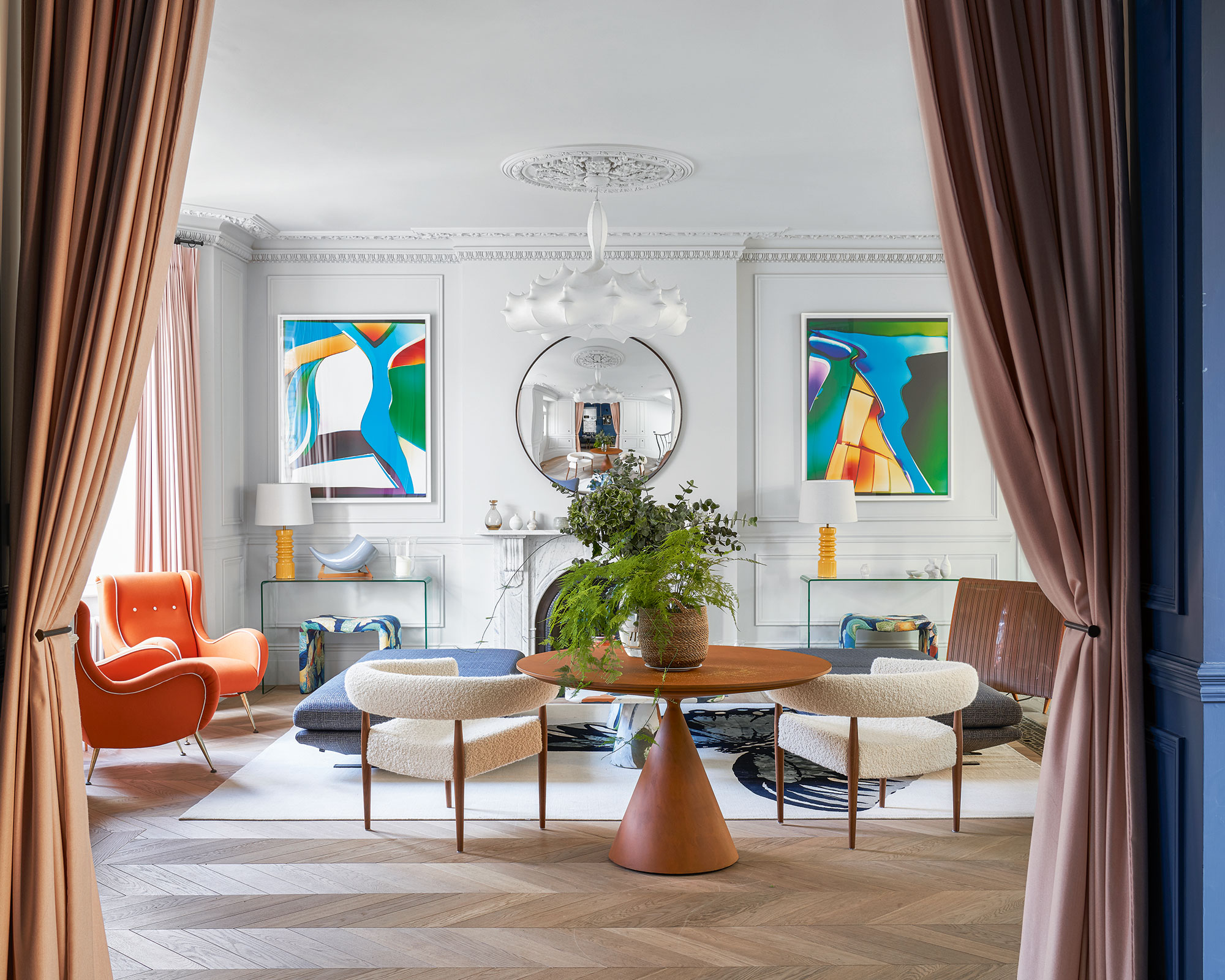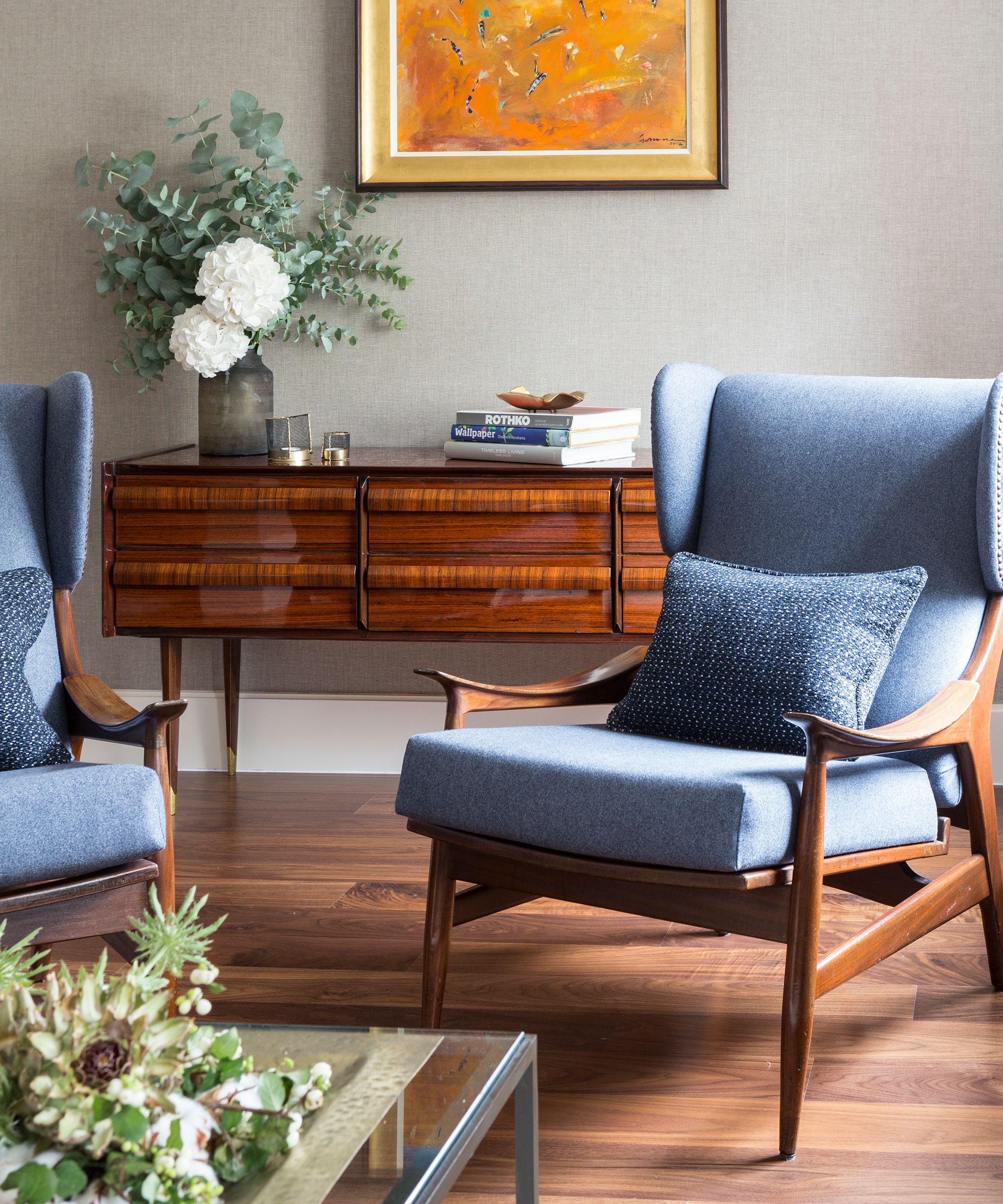
Mid-century modern interior design remains a favorite choice for 21st-century homes. Uncluttered layouts, sleek lines, functional furniture, a mix of natural and manufactured materials, and a neutral palette with accents of bolder color ensure it remains influential and desirable today.
On 'trend' interior design styles come and go, but mid-century modern style is iconic, and it is a style all aficionados of home decor, architecture, and furniture design should be familiar with.
Our guide examines what mid-century modern interior design is, and how it has been adapted to contemporary interiors.
What is mid-century modern interior design?
Mid-century modern is a term used to describe design and architecture – like the mid-century modern home – from the middle decades of the 20th century. The designs of the period aren’t homogenous, but they do have qualities in common.
‘It’s a style characterized by clean lines, organic forms, and functionality, blending traditional and modern materials for a timeless aesthetic,’ says interior designer Artem Kropovinsky.
And while it is of its time, mid-century modern-influenced interiors remain desirable today. ‘Mid-century modern design is all about balance of form and function,’ says Seymen Usta, an interior design specialist, and founder of Seus Lighting.
‘It’s about creating a space that is both visually appealing and highly practical. If you don’t have the budget to invest in authentic mid-century modern pieces, you can still achieve the look with more affordable alternatives like reproductions or vintage finds.’
What are the origins of mid-century modern interior design?

Mid-century modern grew out of modernism, but it is distinct. ‘As a subset of modernism, mid-century modern design is something more closely tied to a time and place than its parent movement,’ explains Gregor Bugel, co-founder of architectural and interior design practice Handwerk Art & Design.
‘Though modernism has its origins in the 19th century, mid-century modernism is absolutely tied to the middle decades of the 20th century, and directly evokes ideas of that era – many would call the style retro,’ he says.
What are the characteristics of mid-century modern interior design?

The lines, materials, and color palettes of mid-century modern interior design differentiate the style from what had gone before.
‘More angular and linear elements of modernism become rounder as curves come into play,’ says Gregor Bugel. ‘The simpler materials of early modernism, such as wood, steel, concrete, and glass, are now augmented with plastics and engineered wood such as plywood. Teak is a specific wood species we see a lot of in mid-century modernism, though by all means it is not the only wood used, as rift-cut white oak is also quite common.
‘Perhaps the biggest change that mid-century modernism brought to modern design is the use of bright color. What was once a more muted tones and neutral color palette now features blocks and fields of brighter color for surfaces, furniture, prints, and paints.
‘These developments can be traced to the ever-evolving technologies that enabled the use of plastics and curves in materials such as glass, but also in other areas of mid-century culture around the world. The jet age, with quick travel and space exploration, introduced a set of forms and materials that hinted at the idea of fast movement. The sunny landscapes of the American West brought in bright colors and textures. Scandinavian furniture design informed the joinery and material of objects and spaces.’
The furniture designs of the era can give a room mid-century interior style, but it’s about the space, too. ‘Like a specific song, a piece of mid-century design furniture can instantly reference a moment in the past,’ adds Gregor Bugel, co-founder of Handwerk Art & Design. ’The essence of mid-century modernism is always on the people in the space and how they are using the space. In this way, it also has connotations of movement, travel, social engagements, and other fun and interesting activities.’
Why would you choose mid-century modern interior design?

While mid-century modern interiors are retro, that’s no reason not to be influenced by the style.
‘Mid-century modern design has proven to stand the test of time,’ says Seymen Usta. ‘I have seen how it can add a touch of sophistication and elegance to any space. For example, the clean lines and minimalism can make a small space feel larger and more open.’
‘Mid-century modernism remains quite a popular inspiration for many people when thinking about how to design their home,’ notes Gregor Bugel. ‘The production methods and general acceptance of the movement at the time have left us with many furniture pieces of the period that are in excellent condition. There is a general appreciation for the period and movement that lead people to take care of these pieces, to all of our benefit.’
Be mindful that mid-century modern interior design is adaptable to the needs and concerns of today’s homeowners. ‘Modern adaptations integrate contemporary technology and sustainable materials, offering personalized, lifestyle-suited designs,’ explains Artem Kropovinsky.
How can you bring mid-century modern style into a home?

Wondering if you’ll need to call on a professional to create mid-century modern interior designs?
‘If you have a good grasp on the principles of mid-century modern design and feel confident in your skills, you can definitely create a cohesive look for your home,’ says Seymen Usta. ‘If you feel like you need more guidance, working with a professional interior designer can help ensure that the design is executed properly and meets your expectations.’
And Gregor Bugel urges enthusiasts to introduce the style. ‘As a product closely tied (at least in the United States) to the post-World War II era, mid-century modernism has always had a more “of the people” feeling to it than modernism proper,’ he says. ‘In this way it is something that individuals can and should incorporate into their homes without hesitation, if the interest is there.
‘Certainly, a professional interior designer can always help form your ideas and hopes for a space into an exciting but efficient experience, and in this varied time of contemporary design where anything goes, this might be a great suggestion for many.’
Mid-century modern design is a timeless look, and its appeal comes with the fact it's so adaptable. It can brought in, in vary amounts and mixed with other styles really seamlessly to create transitional spaces that never date. For example, you can bring a mid-century modern couch into a traditional living room, or a mid-century print into a contemporary bedroom and it works. If you are after a style that will stand every changing tastes and trends mid-century is always a good ide.







